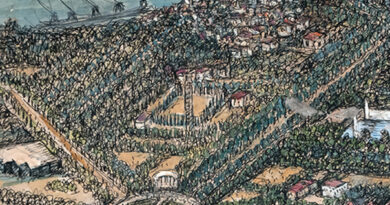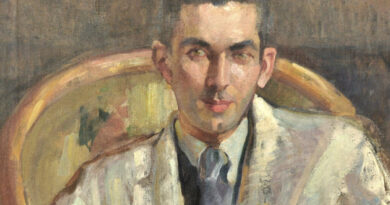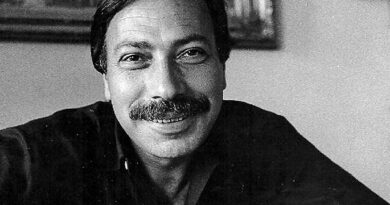portrait: different forms of confrontation with the model
BY MÜMTAZ SAĞLAM
Approaches that free this practice from the obligation of simulation and prioritize the pursuit of an expression or a gesture have led to experiments in deformation, shaking the integrity of the portrait. This development problematizes traditional approaches. In this new process, the focus remains on depicting spiritual qualities that reveal the model’s character, but with more radical emphases, treating the face as a modern conception of the other. Here, difference and excess remain in the legitimate sphere as an attempt at fiction within the moulds of rational contribution and deformation. Contemporary portraiture has clearly moved away from an understanding that visualises the model’s status expectation and social class through clear gender norms, becoming instead a tense act of reflection.
The practice of portraiture is always a complex and tense field of endeavour due to the different formalisation concepts adopted. Every attempt to capture the face within concrete data, to portray it with subjective and psychological emphases, and to achieve profound expression can be seen as a qualified effort of analysis, interpretation, and leaving a trace in time.
The portrait is seen as a pure and unmediated field of attribution established in dependence on the model. What is conveyed here is primarily a snapshot of the model’s image that can be read and translated into visual language. Therefore, as the product of an uncomplicated idea of structure-form shaped according to intersubjective transition, the portrait evolves into a psychological event that gains meaning from the moment it appears. Alternatively, it can be viewed as a complex arena rich with metaphors, extending beyond the dialogue between the artist and the model. In any case, the artist’s tendency to look at the model and paint its face is a matter of wanting to create a space of confrontation. Therefore, examining the model’s face is a sufficiently tense form of relationship for psychological reasons; moreover, it is an act in which a special skill is tested. This is because the attempt to authenticate a face, that is to say, to create a coherent whole by capturing the accurate highlights of the model’s character, inevitably means reconstructing an identity. In this context, transforming a face into a portrait – a face loaded with provocative meanings through implicit connections – becomes an experiment in shaping. This experiment acknowledges the model’s influence but proposes to look critically at the given codes and to turn towards structural difference.
to undermine the conception of an other or the integrity of the portrait
The practice of portraiture focuses, first and foremost, on the representation of facial integrity for the purpose of analogy. It is concerned with a vision based on the impression of the meaning or expression of the face in a short moment. Especially in portrait series spread over time, studies that depict the momentary expression of the same face and are content with the determination of the physical change experienced easily confirm this determination. This practice, which thus becomes a document of an open confrontation, adds a fundamental depth to the realistic and human dimension of the imagined image.
However, as a principled preference and method, being entirely dependent on the face is not the only condition for the success of the portrait. Therefore, the intimate relationship established between the artist and his or her model can only reach what lies beyond the visible through a search for expression caught in the pursuit of the impossible. As a matter of fact, in this tense transfer created by a mutual relational situation, the attempt to turn towards the face/surface, which suffices with narrative techniques, can sometimes turn into a distant observation. The relationship established in the depth of the gaze, on the other hand, transforms into a mysterious interpretation and analysis that differs from everyday language; and takes on an identity that transcends its model.
However, in any case, this creative dialogue with another identity and personality reaches its main goal when it touches unique and different dynamics through the observation of attitude and gesture, which eventually turns into a disassembly and extraction. Artists develop stylistic and manipulative techniques as measured tools for description and simulation, carrying portraiture into new, experimental realms with extraordinary emphases. In addition, it is obvious that the portrait, with its aspect that fixes and shows the transformative trace of time, postpones its model and transforms it into a negative image or a relic as the subject of another change.
The advent of new photographic techniques has opened up more subjective, novel, and experimental avenues for portrait approaches. In particular, approaches that free this practice from the obligation of simulation and prioritize the pursuit of an expression or a gesture have led to experiments in deformation, shaking the integrity of the portrait. This development problematizes traditional approaches. In this new process, the focus remains on depicting spiritual qualities that reveal the model’s character, but with more radical emphases, treating the face as a modern conception of the other. Here, difference and excess remain in the legitimate sphere as an attempt at fiction within the moulds of rational contribution and deformation. Contemporary portraiture has clearly moved away from an understanding that visualises the model’s status expectation and social class through clear gender norms, becoming instead a tense act of reflection.
Moreover, in contemporary portraiture, there is a greater need for fantasy with the addition of the fictive and the imaginary, for interpretations that have abandoned the path of an organised gaze. Many experiments, achieved through the harmony, rhythm and vibration of formalist contributions, already have an order of discourse established in this way and supported or sabotaged by a connotative language. Therefore, every portrait that expresses a consensus that fetishises the face, that is exaggerated but immanent, a product of observation and analysis, is undoubtedly a more meaningful form of the character represented. (Translated by Depp L)
Mümtaz Sağlam, Copyright © 2024 / All Rights Reserved.




